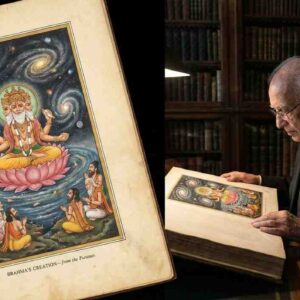Hinduism, with its vast repository of scriptures, is rooted in the wisdom of two primary categories of texts: the Vedas and the Shastras. While both are central to understanding Hindu philosophy, they serve distinct purposes and embody different dimensions of spiritual and practical knowledge.
The Vedas: The Core of Divine Revelation
The Vedas are consideredshruti—divinely revealed texts that are eternal and unchangeable. They are regarded as the highest authority in Hinduism, forming the foundation of spiritual and metaphysical knowledge. Compiled over 3,000 years ago, the Vedas consist of four main texts:
- Rigveda – Hymns praising natural forces and deities.
- Samaveda – Melodic chants used in rituals.
- Yajurveda – Instructions for performing sacrifices.
- Atharvaveda – Spells, charms, and practical wisdom for daily life.
The Vedas emphasize universal truths, addressing existential questions about the nature of reality, the self (atman), and the ultimate reality (Brahman). They are primarily concerned with spiritual knowledge, aiming to guide individuals toward liberation (moksha).
The Vedic literature is divided into:
- Samhitas: Collections of hymns and mantras.
- Brahmanas: Ritualistic instructions.
- Aranyakas: Meditative reflections for forest dwellers.
- Upanishads: Philosophical discourses on ultimate reality and self-realization.
The Shastras: Practical Guides for Earthly Life
In contrast to the Vedas, the Shastras are consideredsmriti—texts remembered and written by sages based on divine teachings. They serve as practical manuals for living a righteous and orderly life, offering guidance on ethics, social conduct, law, and rituals.
The Shastras include:
- Dharma Shastras: Texts like Manusmriti that outline moral and societal codes of conduct.
- Arthashastra: A treatise on statecraft, economics, and political science by Kautilya (Chanakya).
- Kama Shastra: Texts like the Kamasutra, focusing on human relationships and desires.
- Yoga Shastras: Manuals on physical, mental, and spiritual practices.
- Ayurveda Shastras: Guides to holistic health and medicine.
While the Vedas address ultimate truths and transcendental knowledge, the Shastras are focused on practical aspects of human life, adapting to the societal needs of different times.
Key Differences Between the Vedas and Shastras
| Aspect | Vedas | Shastras |
| Nature | Eternal, divine revelations (shruti) | Human interpretations (smriti) |
| Focus | Spiritual and metaphysical knowledge | Practical guidance for daily life |
| Authority | Supreme authority in Hinduism | Secondary, derived from the Vedas |
| Examples | Rigveda, Samaveda, Upanishads | Manusmriti, Arthashastra, Ayurveda |
| Purpose | Guiding liberation (moksha) | Structuring ethical and social life |
Interplay Between the Vedas and Shastras
Though distinct, the Vedas and Shastras complement each other. The Vedas provide the philosophical foundation, while the Shastras translate these principles into actionable guidelines for individuals and society. For instance, while the Vedas explore the nature ofdharmain abstract terms, the Dharma Shastras define it in the context of familial, social, and legal responsibilities.
Relevance in Modern Times
In today’s fast-paced world, the Vedas continue to inspire spiritual seekers, while the Shastras offer practical insights into ethical living and societal harmony. Efforts by organizations like the Indian Council of Philosophical Research and academic institutions have digitized these texts, making their wisdom accessible to global audiences.
Conclusion
The Vedas and Shastras, though different in focus and origin, are integral to understanding Hindu philosophy. Together, they offer a comprehensive framework for navigating both spiritual and worldly life, bridging eternal truths with practical realities. By studying these texts, individuals can find a harmonious path to personal growth, societal well-being, and ultimate liberation.












